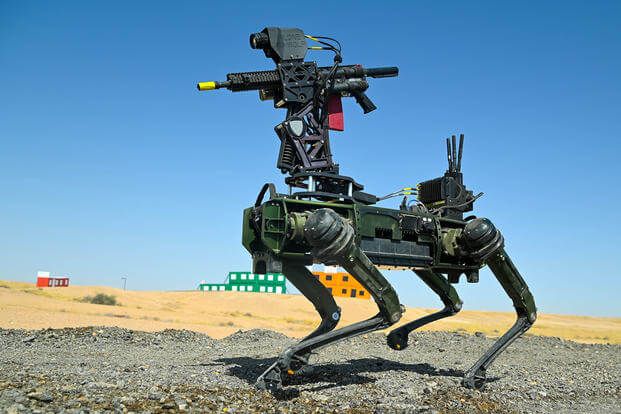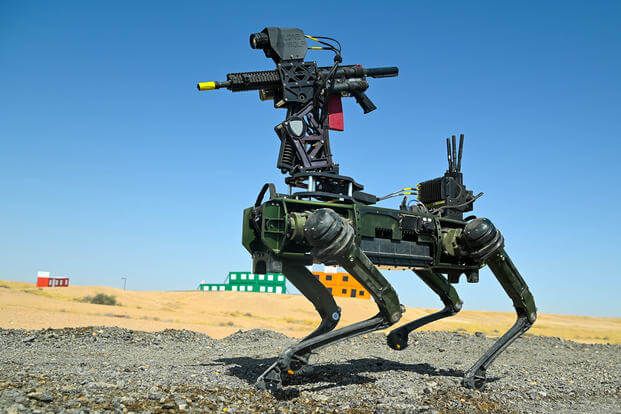
The US Army has conducted tests in Saudi Arabia featuring an armed and AI-powered robot dog able to shoot down drones.
The Vision 60, developed by Ghost Robotics, is equipped with a range of high-tech features designed to enhance battlefield capabilities.
Primarily aimed at anti-drone operations, the Vision 60 is equipped with a turret and an AR-15/M16 rifle, and is able to detect and engage aerial targets.
Vision 60 testing
The test in Saudi Arabia, reported by Military.com, is part of a broader effort to develop and deploy effective anti-drone systems. As drones become more prevalent in warfare, the need for reliable defense mechanisms has grown.
The footage released by the US Army shows the robot dog in action, targeting drones with precision thanks to its electro-optical targeting system, engraved with the words “Lone Wolf,” – the same as that used in recent US Army “Hard Kill” operations.
In military parlance, active defense systems are generally categorized into “hard kill” and “soft kill.” Hard kill systems, like the one used by the Vision 60 robot dog, physically destroy incoming threats, such as missiles or drones, by intercepting them mid-air. Soft kill systems, on the other hand, focus on disrupting or disabling an enemy’s equipment through non-destructive means, such as electronic interference.
Ghost Robotics, the company behind Vision 60 Q-UGV, says it is designed to be highly adaptable and capable of operating in various terrains and environments. I
t has already been deployed by several militaries worldwide for different purposes, including surveillance, reconnaissance, and search and rescue missions. While the robot dog has been utilized in combat scenarios, this marks one of the first public demonstrations of a weaponized version being tested for anti-drone purposes.
The United States military is taking major steps in advancing its defense technologies, particularly in the realm of robotics and artificial intelligence (AI).
The use of weaponized robots, often referred to as “killer robots,” remains a controversial subject. However, the US is not alone in its pursuit of armed robotic systems. Other countries, including China, Russia, and the United Kingdom, are also actively developing similar technologies.
While robotic systems have been employed in various military roles, the deployment of fully autonomous, armed machines in combat is rare. Critics argue that the ethical implications of such technologies must be carefully considered, as the introduction of autonomous lethal force raises serious moral and legal questions. Nevertheless, there is an active global race to develop AI-powered, weaponized robots that will reduce human involvement in high-risk combat situations and improve the efficiency of defensive systems.
More from TechRadar Pro
Services Marketplace – Listings, Bookings & Reviews
